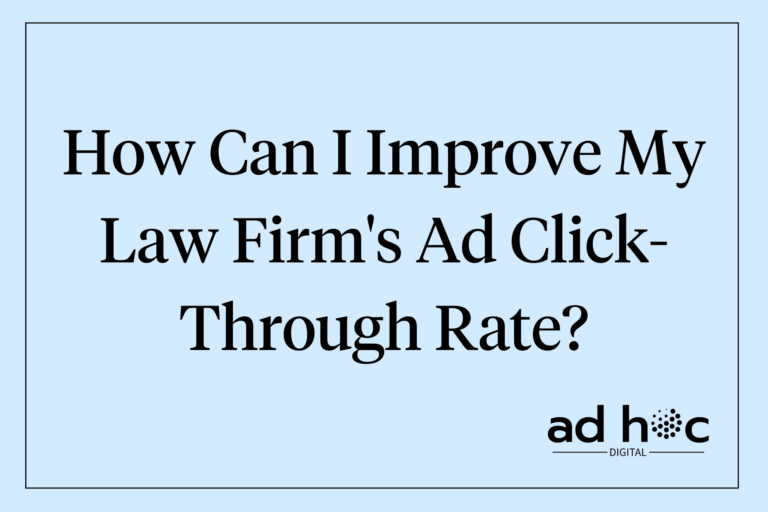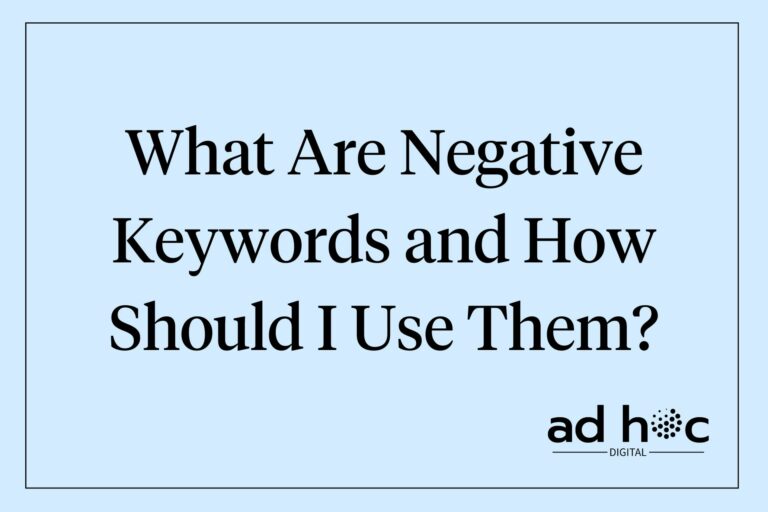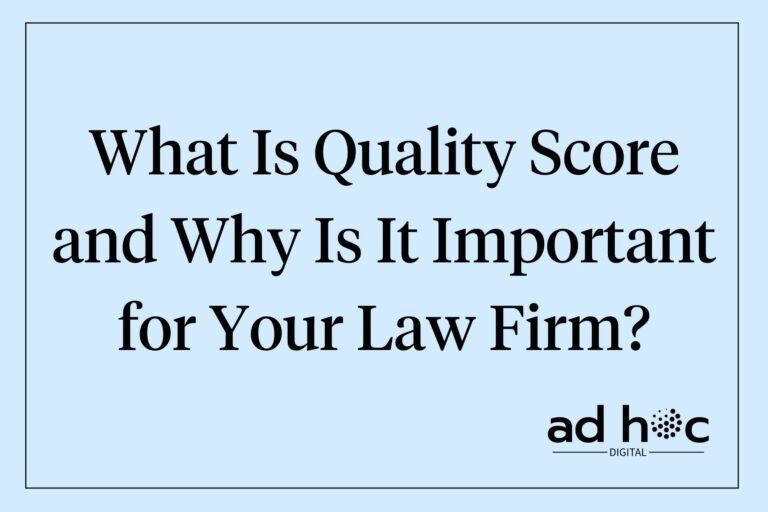Creating effective ad copy for your law firm’s Google Ads is crucial for attracting potential clients and driving conversions. Well-crafted ad copy can make your ads stand out, resonate with your audience, and compel them to take action.
Without quality ad copy, your ads will be mediocre at best and terribly unprofitable at worst, so it is super important that you get this right.
This comprehensive guide will walk you through all of the steps you should take in order to write compelling ad copy for your law firm’s Google Ads.
For deeper insights into crafting successful campaigns, explore our guide on effective Google Ads strategies for lawyers.
Understanding Your Audience
Identifying the Target Audience
Though it might sound incredibly simple and unsubstantial, knowing who your potential clients are is always the first step you must undertake in writing effective ad copy.
The reason why this is so important is because, in order to get people to take action, your ad copy needs to speak to them directly. Here are a few reasons why this is so important:
- Personalization: When your ad copy speaks directly to the reader, it feels more personal and relevant (obvious but often overlooked). This personalization can make the reader feel understood and valued, which increases the likelihood of them taking action.
- Emotional Engagement: Direct communication helps to tap into the emotions of the reader, and emotions are one of the largest drivers of human behavior. By addressing their specific needs, concerns, and desires, you can evoke emotions that drive them to act, whether it’s curiosity, urgency, or a sense of necessity.
- Clarity and Relevance: Speaking directly to your audience ensures that your message is clear and relevant to them. It helps to cut through the noise and provides them with information that is directly applicable to their situation, making it more likely they will respond. It also disqualifies unqualified prospects (more on this later).
- Trust and Credibility: When ad copy resonates with the reader, it builds trust and credibility. If potential clients feel that you understand their problems, it implies to them that you’ve helped people in their situation many times before, and because of this, they are more likely to trust your firm and take action.
- Improved Conversion Rates: Ads that speak directly to the audience always have higher conversion rates. By addressing the reader’s pain points, aspirations, or questions, you can guide them towards taking the next step, whether it’s calling your firm or filling out a form.
Because of this, you should invest a lot of time and effort into understanding the demographics, interests, and behaviors of your target audience prior to going live with any ad campaign.
This is best explained with examples, so I have compiled a table for some common practice areas and some information about their typical target audiences below:
| Practice Area | Demographics | Income Characteristics | Feelings and emotions | Behavior |
|---|---|---|---|---|
| Family Law | Adults aged 30–50, both men and women | Middle to upper-class | Overwhelmed, anxious, seeking resolution and support | Searching for compassionate, experienced legal guidance |
| Personal Injury | Adults aged 20-60, typically accident victims | Varied, often middle class | Frustrated, in pain, and eager for justice and compensation | Searching for quick, effective legal assistance to handle medical bills and lost wages |
| Criminal Defense | Adults aged 18–50, both men and women | Varied, often middle to lower-middle-class | Scared, stressed, desperate for legal protection | Seeking an immediate, skilled legal defense to avoid severe consequences |
| Estate Planning | Adults aged 40–90, both men and women | Upper-middle to upper class | Concerned about the future, wanting to secure their family’s financial stability | Looking for trustworthy, knowledgeable legal advice to plan their estate |
| Immigration Law | Adults aged 25-50, often immigrants and their families | Varied, often lower-middle class | Hopeful yet anxious about their legal status | Seeking reliable, empathetic legal support to navigate immigration processes |
| Employment Law | Adults aged 25-60, both men and women | Middle class | Frustrated, seeking justice and fair treatment | Searching for legal support to handle workplace disputes or discrimination |
| Bankruptcy Law | Adults aged 30-60, both men and women | Varied | Stressed and desperate for relief from debt | Looking for immediate, effective solutions to financial problems |
It is not just important to go through and really deeply understand your audience for the purpose of effective ad copy, but it is also relevant for choosing your advertising channel and audience targeting.
For example, if you run a personal injury firm, understanding that potential clients are looking to hire an attorney quickly might lead you to target more direct keywords. On the other hand, if you run an estate planning firm, you might focus on informational and research-based queries to nurture your audience, as these decisions typically involve more time and consideration.
Key Components of Effective Google Ads Copy
Creating effective ad copy for Google Ads requires a strategic approach that captures attention, communicates value, and drives action. Here are the key components to focus on:
- Compelling Headlines: Your headline is the first thing users see, so it needs to grab their attention immediately. You should use clear, concise language that highlights the main benefit or unique selling point of your service. Including numbers, questions, or keywords can make your headline more compelling. Make sure your headline matches the intent behind the user’s search query, leveraging dynamic keyword insertions for optimal relevance.
- Persuasive Descriptions: After your headline, write persuasive and clear descriptions that provide more details about your law firm and services. Start with a question and follow with a value proposition or call-to-action. Highlight the benefits of choosing your firm over others, and use simple language to ensure clarity. Remember, you have up to 90 characters, so be concise yet descriptive.
- Strong Calls to Action (CTAs): Use strong and actionable CTAs to encourage users to click on your ad. Phrases like “Call Now,” “Get a Free Consultation,” or “Learn More” can work well to prompt immediate action. Ensure your CTA aligns with your target audience’s preferences and reduces any possible friction, such as by offering free consultations instead of paid ones.
- Effective Ad Extensions: Enhance your ad visibility and provide additional information with ad extensions. Use sitelink, call, location, callout, structured snippet, and price extensions to give users more ways to engage with your firm. Ensure all information is accurate and up-to-date, and regularly test different extensions to find the most effective combinations.
By focusing on these key components, you can create compelling Google Ads that capture attention, communicate your value proposition effectively, and ultimately drive clients to your law firm.
Now the next sections will outline how to succeed with each key component in detail.
How to Create The Perfect Google Ads Headline
Since your headline is the first thing users see, it needs to grab their attention immediately.
To maximize effectiveness, your headline should exactly match the intent behind the user’s search query.
Though this is often a very challenging endeavor, given the 30-character limit…
Example:
Consider a user searching for “best car accident lawyer near me.” and they see two ads with distinctly different headlines:
- Headline 1: Personal Injury Lawyer – FIRM NAME
- Headline 2: Best Car Accident Lawyer Near You – 98% Success Rate – Call Us Today for a Free Consultation
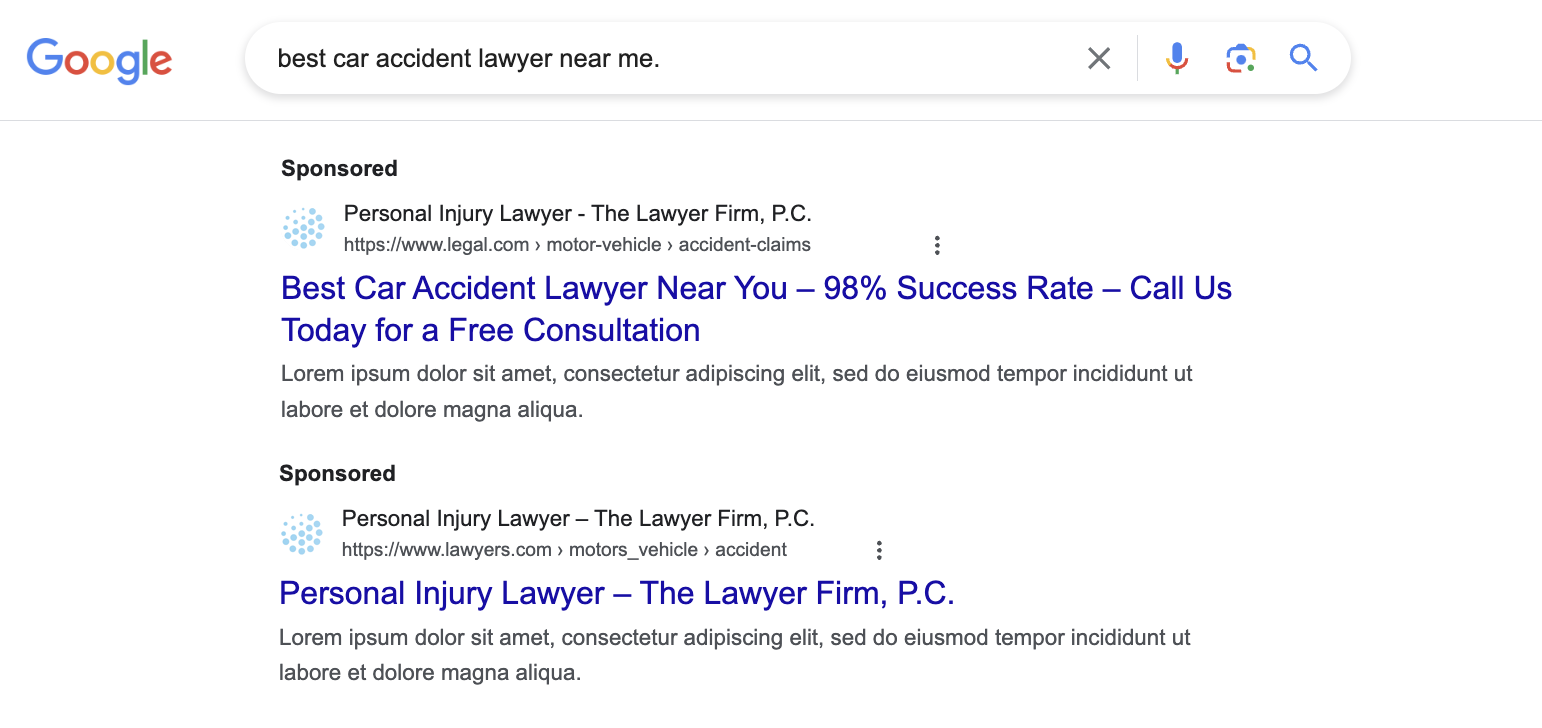
It’s clear which one will perform better.
To achieve this, we typically use a behavior-based approach with our clients’ Google Ads, leveraging dynamic keyword insertions to automatically create the perfect headline and description based on what is most likely to appeal to the user.
Proven Formulas for Google Ads Headlines:
- Trusted PRACTICE AREA Firm in LOCATION
- X% Success Rate (if applicable, don’t use if it’s low)
- PRACTICE AREA Attorney Near You
- FIRM NAME (works especially well if you are known in your community)
- Hundreds of Satisfied Clients (if applicable)
- Get a Free 1:1 Consultation
- Over X Years of Experience (avoid if the number is low)
- 5 Star Rated Everywhere (make sure this is true)
- Call Us Now (simple but effective)
Note: We recommend capitalizing headlines in ‘Title Case’ using simple tools like Capitalize My Title.
You should take some time to map out headlines in a spreadsheet and brainstorm many more than needed. While it requires significant time and effort, getting it right early ensures better ad performance sooner.
Utilizing AI for Headline Ideas:
You can also use AI tools like ChatGPT to generate headline ideas, though, you should note that AI-generated headlines typically do not perform well. We typically use a prompt like “Can you reword this headline five times, keeping your output to less than 30 characters.” However, be sure to review and refine the AI suggestions to maintain a human touch.
If you are struggling to come up with headline ideas, you can use the following types to make the process easier:
- Description-based headlines: Your firm name, practice area, etc.
- Social proof-based headlines: Elements that enhance credibility, such as experience, win rate, reviews, accolades, etc.
- Call to action-based headlines: Directives for the user, e.g., “Call now” or “Request a consultation.” Make sure to emphasize if you offer a free consultation.
Example Spreadsheet Layout for Headline Brainstorming:
| Headline Type | Headline Ideas |
|---|---|
| Description-based | Trusted Personal Injury Lawyer in New York |
| Experienced Divorce Attorney – Smith Law Firm | |
| Leading Immigration Lawyer in Los Angeles | |
| Social proof-based | 98% Success Rate |
| Over 20 Years of Experience | |
| Hundreds of Satisfied Clients | |
| Call to action-based | Get a Free 1:1 Consultation |
| Call Now for Immediate Legal Help | |
| Request Your Free Consultation Today |
Another important consideration is to experiment with pinning headlines to specific positions to see if it improves performance. Pinning makes it so that a particular headline appears only in one of the three available positions. For example, an ad might show up like any of the variations below with no pinning:
- Best Car Accident Lawyer Near You – 98% Success Rate – Call Us Today for a Free Consultation
- 98% Success Rate – Call Us Today for a Free Consultation – Best Car Accident Lawyer Near You
- Call Us Today for a Free Consultation – Best Car Accident Lawyer Near You — 98% Success Rate
In my opinion, the first variant reads the best, but people might disagree with me, which is why most often we let Google decide which combination is most likely to perform with a particular user.
Because pinning often underperforms, you should test and analyze the data to determine whether it’s effective for you or not.
Crafting a Diverse Set of Headlines
You should also try to provide Google with the maximum number of headlines (up to 15) to increase the chances of finding successful combinations. More headlines mean more opportunities for optimal ad performance.
Final Tips for Effective Headline Creation
- Understand Your Audience: Tailor your headlines to resonate with your target audience’s specific needs and pain points. For instance, a family law firm might focus on compassionate support during difficult times, while a personal injury lawyer might emphasize quick settlements and fighting for maximum compensation.
- Use Strong Action Words: Incorporate strong action words that prompt the user to take immediate action. Words like “Discover,” “Secure,” “Get,” “Protect,” and “Claim” can make your headlines more dynamic and persuasive.
- Highlight Unique Selling Points: First, identify what sets your firm apart from the competition, and make sure you highlight these unique selling points in your headlines. This could be your years of experience, a high success rate, specialized expertise, or a client-focused approach.
- Leverage Emotional Triggers: Use emotional triggers in your headlines to connect with potential clients on a deeper level. Words that evoke emotions like “relief,” “confidence,” “justice,” and “protection” can be particularly effective.
- Incorporate Keywords Strategically: Make sure your headlines include relevant keywords that match user search queries. This not only helps to improve ad relevance, but it also boosts your quality score, leading to better ad placement, lower costs, and better-performing ads in general.
- Test Variations Regularly: You should also regularly test different headline variations to see which ones perform best. A/B testing can provide valuable insights into what resonates most with your audience and help you optimize your headlines for maximum impact (more on this later).
Remember, the sooner you get it right, the sooner your ads will start generating the desired results.
How to Create The Perfect Google Ads Description
Once you have compelling headlines, the next step is to write persuasive and clear descriptions that provide more details about your law firm and services. One effective approach is to start with a question and then follow with a value proposition or call-to-action.
For example:
- “Injured in a Truck Accident? Call Us Now and Get a Free Consultation!”
With descriptions, you have up to 90 characters, so you can be a bit more descriptive and sell your firm more than with headlines. However, be aware that descriptions are rarely read in their entirety. Most of the time, people tend to skim through them, so focus on making them readable, skimable and highlighting the benefits of choosing your law firm over all the others.
Tips for Writing Google Ads Descriptions
- Start with a Question: Begin with a question that addresses the user’s immediate concern or problem.
- “Need an Estate Plan? We Offer Free Consultations!”
- Do note that this isn’t necessary, but we usually have one or two out of the four available descriptions start with a question.
- Highlight Key Benefits: Clearly state the benefits of choosing your law firm over others.
- “While Other Lawyers Settle For Less, We Will Fight to Get the Maximum Settlement for You.”
- “Experienced Trust & Wills Law Firm in LOCATION. Over 30 Years of Legal Experience.”
- Use Simple Language: Write at about a 6th grade level to ensure clarity and avoid legal jargon.
- “Facing Criminal Charges? Get Expert Legal Help Now!”
- Include a Call-to-Action: Encourage the user to take the next step.
- “Injured in an Auto Accident? Call Today for a Free Case Review.”
- “Get Your Free One-on-One Consultation Today. Let Us Help You Protect Your Loved Ones.”
Common Selling Points to Highlight
Below, I’ve included some common selling points we normally look to highlight wherever possible:
- Experience in a Specific Practice Area: Emphasize your expertise in the relevant field.
- “Over 20 Years of Experience in Personal Injury Law.”
- Personalized Service: Mention if the attorney works one-on-one with clients.
- “You’ll Work Directly with Our Principal Attorney.”
- Firm Size and Client Care:
- Small Firm: “We Treat All Our Clients Like Family.”
- Large Firm: “Benefit from Our Extensive Resources and Experience.”
- Client Success Stories or Statistics:
- “98% Success Rate.”
Examples of Google Ads Descriptions
| Scenario | Description |
|---|---|
| Personal Injury | “Injured in an Accident? Get a Free Consultation and Maximize Your Settlement.” |
| Family Law | “Do You Need a Divorce Lawyer? Call Us Now for Compassionate Legal Support.” |
| Criminal Defense | “Charged with a Crime? Expert Defense Attorneys Available 24/7.” |
| Estate Planning | “Secure Your Family’s Future with Our Experienced Estate Planning Services.” |
| Immigration Law | “Navigating Immigration Issues? We’re Here to Help You Every Step of the Way.” |
| Employment Law | “Facing Workplace Discrimination? Get Legal Help Now.” |
Matching User Intent
You always have to make sure that your description matches the user’s search intent. For example, if you are targeting informational keywords, you need to provide informative descriptions rather than aggressive calls-to-action.
For example:
For the keyword “when should I consider estate planning?”:
You don’t want to have an ad that is purely selling your firm as the best estate planning firm, but you want to match the query.
Final Tips:
- Experiment with Different Approaches: Test various descriptions to see which resonates best with your audience. It is okay to start off with some of the frameworks outlined in this article, but don’t be afraid to get creative and add your own spin to them.
- Use the Full 90 Characters: Maximize the space available to convey your message. Small descriptions make the ad smaller, and also look less credible. See the image below for an example:

By focusing on clear, concise, and compelling descriptions, you can effectively communicate the unique benefits of your law firm and encourage potential clients to take action.
How to Create the Call to Action (CTA)
Using strong and actionable calls to action (CTAs) is crucial for encouraging users to click on your ad. Effective CTAs should be included in both your headline and description, as they guide the user and prompt immediate action.
Key Elements of Effective CTAs
- Action-Oriented Language: Use clear, directive language that tells the user exactly what to do next.
- Examples: “Call Now,” “Get a Free Consultation,” “Learn More”
- Align with User Intent: Tailor your CTAs to match the preferences of your target audience.
- Car Accident Law Firm: Emphasize calling, as users often prefer immediate verbal communication.
- Estate Planning Firm: Highlight that they can request information via a form, as users may prefer detailed written information.
- Reduce Friction: Offer low-friction options to increase engagement. Free consultations, for instance, have less friction than paid consultations (obvious but often overlooked).
- Example: “Get a Free Consultation” vs. “$500 Consultation”
Examples of Strong CTAs for Various Practice Areas
| Practice Area | Call to Action Examples |
|---|---|
| Personal Injury | “Injured? Call Now for a Free Case Review” |
| Family Law | “Need Help? Get a Free Divorce Consultation Today” |
| Criminal Defense | “Charged with a Crime? Call Now for Immediate Legal Help” |
| Estate Planning | “Secure Your Future – Request Your Free Estate Plan Review” |
| Immigration Law | “Facing Immigration Issues? Get a Free Consultation Today” |
| Employment Law | “Workplace Issues? Call Us Now for Expert Legal Advice” |
| Bankruptcy Law | “Drowning in Debt? Get a Free Bankruptcy Consultation” |
Final Tips for Crafting CTAs
- Match the CTA to the Headline and Description: Ensure that your CTA aligns seamlessly with the rest of your ad copy for a cohesive message.
- Headline: “Best Car Accident Lawyer Near You”
- Description: “98% Success Rate – Call Us Today for a Free Consultation”
- CTA: “Call Now for Your Free Consultation”
- Emphasize Immediate Action: Create a sense of urgency to encourage users to act quickly.
- Examples: “Call Now” or “Get Immediate Help”
- Highlight Value: Clearly communicate the value of taking the next step.
- Example: “Get a Free Consultation and Maximize Your Compensation”
- Use A/B Testing: Continuously test different CTAs to see which ones perform best. A/B testing can provide insights into what resonates most with your audience.
Example Spreadsheet Layout for CTA Brainstorming
| Practice Area | Headline Example | Description Example | CTA Example |
|---|---|---|---|
| Personal Injury | “Best Car Accident Lawyer Near You” | “98% Success Rate – Call Us Today for a Free Consultation” | “Call Now for Your Free Consultation” |
| Family Law | “Trusted Divorce Lawyer in Your Area” | “Compassionate Legal Support – Get a Free Consultation” | “Call Today for Free Legal Advice” |
| Criminal Defense | “Top Criminal Defense Lawyer Near You” | “Expert Legal Defense Available 24/7 – Free Consultation” | “Get Immediate Help – Call Now” |
| Estate Planning | “Leading Estate Planning Attorney” | “Secure Your Future – Free Estate Plan Review” | “Request Your Free Estate Plan Review” |
| Immigration Law | “Best Immigration Lawyer in Your City” | “Navigating Immigration Issues? Free Consultation Available” | “Get a Free Consultation Today” |
| Employment Law | “Experienced Employment Lawyer” | “Facing Workplace Issues? Get Expert Legal Help Now” | “Call Now for Expert Legal Advice” |
| Bankruptcy Law | “Top Bankruptcy Attorney Near You” | “Drowning in Debt? Free Bankruptcy Consultation Available” | “Get a Free Bankruptcy Consultation” |
These calls to action that you create should be implemented as headlines for your ads and also integrated into the description. They should also match up with the landing page. For example, you don’t want to have ads that push people to call your firm, and when they see your landing page, it emphasizes a form submission.
Final Thoughts
Crafting effective CTAs is essential for driving user engagement and conversions in your Google Ads. By using clear, actionable language, aligning with user intent, reducing friction, and continuously testing different approaches, you can create CTAs that not only capture attention but also drive users to take the action you desire. Remember, the key is to make it as easy as possible for potential clients to take the next step, whether that’s making a call, filling out a form, or requesting a consultation.
How to Use Ad Extensions
Ad extensions are an extremely powerful tool in Google Ads that can enhance your ad visibility, provide additional information, and improve click-through rates. By using ad extensions effectively, you can make your ads more compelling, drive more qualified traffic to your site and ultimately get more clients for the same ad spend.
Types of Ad Extensions and How to Use Them
- Sitelink Extensions: Sitelink extensions allow you to add additional links to your ad, directing users to specific pages on your website. This can be particularly useful for highlighting different services or key pages.
- Example:
- Practice Area: Personal Injury
- Sitelinks:
- “Free Case Evaluation”
- “Client Testimonials”
- “Our Success Stories”
- “Meet Our Attorneys”
- Note: I don’t recommend having them take the users to a different page on your website. I would say either create different landing pages for each (preferred), or add a #SECTION at the end of the link so it takes them to that section on your landing page.
- Example:
- Call Extensions: Call extensions add a phone number to your ad, making it easy for users to call your law firm directly from the ad. This is especially effective for practice areas where immediate contact is crucial.
- Example:
- Practice Area: Criminal Defense
- Call Extension: “Call Now”
- Example:
- Location Extensions: Location extensions display your law firm’s address and a map, helping users find your office easily. This is beneficial for driving local traffic to your physical location.
- Callout Extensions: Callout extensions allow you to add additional text to your ad, highlighting key features or benefits of your services.
- Example:
- Practice Area: Family Law
- Callouts:
- “Compassionate Legal Support”
- “Over 20 Years of Experience”
- “Free Initial Consultation”
- “Client-Focused Approach”
- Example:
- Structured Snippet Extensions: Structured snippets provide more context about the nature and range of your services, using predefined headers and values.
- Example:
- Practice Area: Employment Law
- Structured Snippets:
- Header: “Services”
- Values: “Wrongful Termination, Discrimination, Harassment, Employment Contracts”
- Example:
- Price Extensions: Price extensions show the cost of services, helping users understand the potential investment upfront. This can be particularly useful for commoditized services. Though I would only recommend it if the price is low, for example, a free consultation.
- Example:
- Practice Area: Personal Injury Law
- Price Extension:
- “Initial Consultation $0”
- Example:
- Image Extensions: Image extensions allow your ad to feature images. I recommend adding only photos of your attorneys or your team. These are super effective because they make your ad stand out significantly, especially when you have multiple, like the example below.
Compare the ads that have extensions versus the ones that do not. The ads are all the same in terms of headline and description; the key difference is that one has several (stock) images and other extensions. Which one would you be more likely to click on?
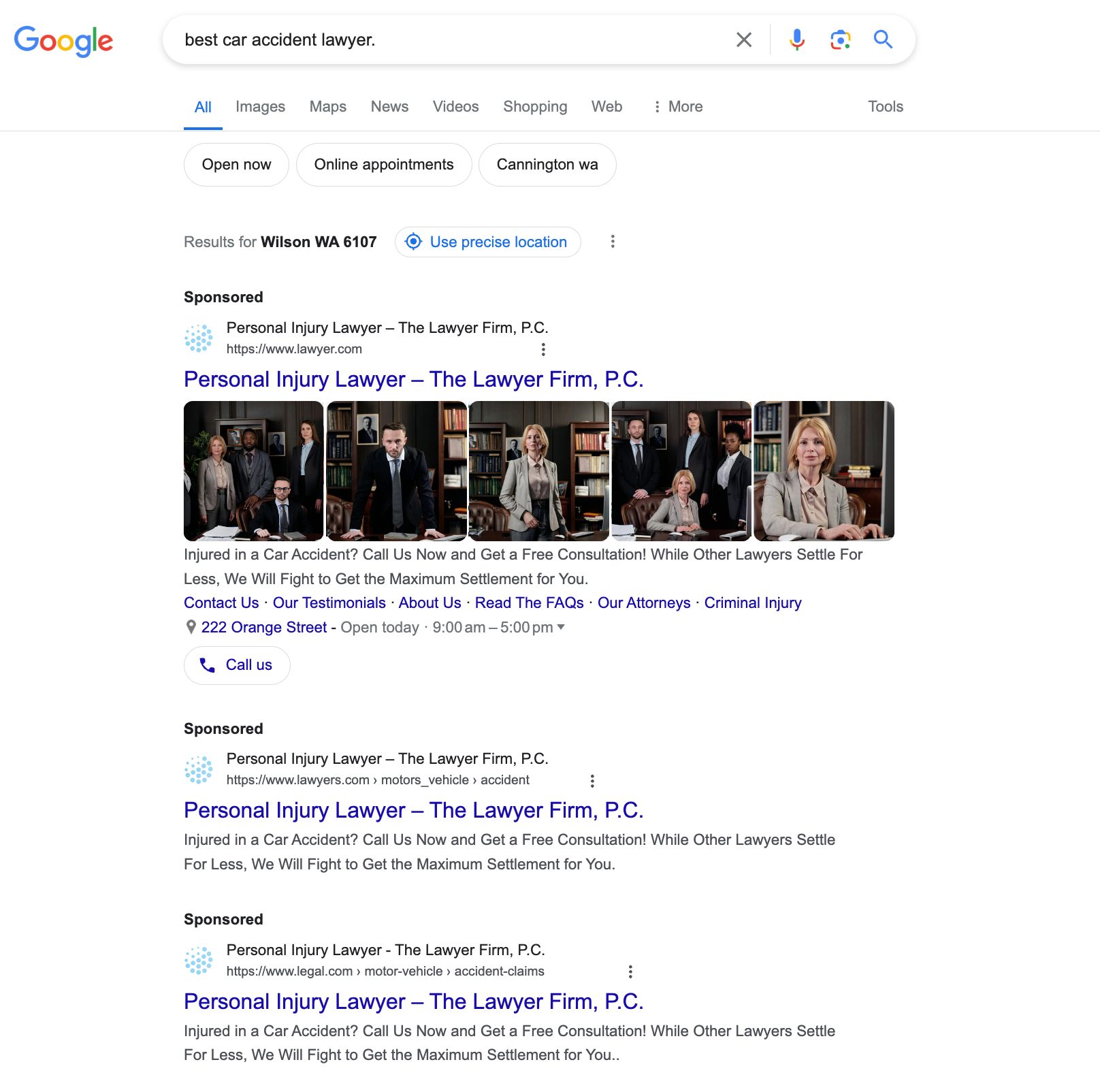
Example Ad with Extensions
Ad Text:
- Headline 1: Best Personal Injury Lawyer Near You
- Headline 2: 98% Success Rate – Free Consultation
- Description: Injured? Call Now for a Free Case Review. Get the Compensation You Deserve.
Extensions:
- Sitelinks:
- Free Case Evaluation
- Client Testimonials
- Our Success Stories
- Meet Our Attorneys
- Call Extension: ‘Call Now’
- Callouts:
- Compassionate Legal Support
- Over 20 Years of Experience
- Free Initial Consultation
- Client-Focused Approach
- Structured Snippets:
- Header: “Services”
- Values: “Car Accidents, Slip and Falls, Medical Malpractice”
Final Tips for Using Ad Extensions
- Utilize All Relevant Extensions: Make use of all ad extensions that are relevant to your law firm. This will make your ad stand out from the rest; it will make your ad ‘larger’, which also leads to a higher click-through rate; and it will also provide users with multiple ways to engage with your firm, further boosting conversion rates.
- Keep Information Up-to-Date: Ensure that all information in your ad extensions is accurate and up-to-date. Incorrect or outdated information can lead to a poor user experience and reduce trust in your firm.
- Align with User Intent: Match your ad extensions to the user’s search intent. Similar to the first point, you do not want to bait-and-switch on your users. This does way more harm than good.
- Highlight Unique Selling Points: Use callouts and structured snippet extensions to highlight what sets your law firm apart, such as years of experience, client testimonials, or specialized services.
By effectively utilizing ad extensions, you will enhance the visibility, credibility, and engagement of your Google Ads, driving more qualified leads to your law firm and ultimately increasing the number of clients you will receive.
You can learn more about using ad extensions effectively at Google Ads ad extensions for lawyers.
Best Practices for Writing Ad Copy
Use of Keywords
You should always try to integrate relevant keywords naturally into your ad copy. The most important thing is for it to be natural. Avoid keyword stuffing, which can make your ad sound unnatural and reduce its effectiveness.
Keywords help your ad appear in relevant searches and signal to potential clients that your services directly match their needs. You also want it to disqualify people. For example, if someone is searching for informational keywords like ‘what does a car accident lawyer even do?’, (if your ad shows up), you want them to see your ad and scroll past it because it is not relevant. That way, you don’t spend money on the click.
Similarly, if you can only work with auto accidents, you want people who searched ‘accident attorney’ for the purpose of a slip and fall to scroll past and not click.
If you are more experienced, you can also use dynamic keyword insertions (DKI) to make the ad extremely relevant to what the user is looking for.
For more insights into DKI, check out our article on dynamic keyword insertion for lawyers.
Highlighting Unique Selling Points (USPs)
What sets your law firm apart from others? Each year, there are more and more law firms in each practice area, and the industry is only getting more competitive. Because of this, it is a necessity to stand out from the noise. You may have been able to get away with this several years ago, but with the landscape that exists at the moment, you must first have a unique selling point (USP) and then highlight it in your ad copy. This was touched on previously, but it could include years of experience, success rates, specialized expertise, or a free consultation offer.
Addressing Client Concerns
You should also try to address common questions and concerns that potential clients might have. This could include cost, experience, and the legal process. Providing answers to these concerns in your ad copy can help build trust and encourage users to contact you.
For example, for personal injury lawyers, though it is obvious to many that they operate on a contingency or no-win, no-fee basis, this still needs to be communicated to the audience because many are unaware and would disqualify themselves over this.
Imagine a person who wants to hire an attorney for an accident but doesn’t bring themselves to do it because they think it would be expensive and they don’t have any money. This is the last thing you want, so it should emphasize how important it is to educate clients in your ad copy.
Think of the most common objections you receive, and then tailor it around that.
Ad Copy Compliance Considerations
Legal Advertising Rules
Ensure that your ad copy complies with legal advertising standards. This includes avoiding misleading claims, respecting privacy, and adhering to professional ethics. Check the advertising rules specific to your jurisdiction to make sure that you are compliant.
Avoiding Common Pitfalls
Common mistakes in legal ad copy include making guarantees, using inappropriate language, and failing to disclose required information. Avoid these pitfalls by thoroughly reviewing your ad copy, especially if you are working with an agency or another company.
Often times, if you are working with a company that doesn’t only work with law firms, they might create the ads for you the same way they would for a roofing company or a gym, but if you don’t review their work, there is a possibility that they could get you in trouble. Don’t make this costly mistake!
Testing and Optimization
A/B Testing
Once you have gathered some initial data on your account, it’s essential to conduct A/B tests. This involves comparing different ad variations to determine which ones perform best.
Test various elements such as headlines, descriptions, CTAs, and ad extensions to discover what performs the best with your audience.
Continuous testing is crucial because it provides a growing pool of data, enabling you to refine your campaign over time. The more experiments you run, the stronger your campaign will become.
Even if a tested variable does not yield better results, you still gain valuable insights into what doesn’t work. This allows you to adjust your strategy and try new approaches moving forward.
Analyzing Performance Data
In addition to constant A/B testing, you should continuously analyze your ad performance data to identify trends and areas for improvement. Without data, decisions become purely emotional, which is never effective in performance advertising.
Regularly monitor metrics such as CTR (Click-Through Rate), conversion rate, and CPC (Cost Per Click) to evaluate the effectiveness of your ads. After running your ads for some time and establishing baselines, you’ll better understand what your KPIs (Key Performance Indicators) should be. Be cautious of listening to advice to aim for specific CTRs or CPCs, as these can vary significantly. These metrics should never be your primary focus.
For example, if someone mentions that you should aim for a 5% CTR, this ultimately doesn’t really mean anything. If you get a 100% CTR, this also doesn’t really mean anything.
Your primary goal should be the return on advertising spend (ROAS). Establish minimum acceptable benchmarks for ROAS and then determine the minimum CTR, maximum CPC, and minimum CVR (Conversion Rate) needed to achieve that return.
We typically set a minimum ROAS of three as an initial KPI. If it is below three, then something isn’t functioning as it should.
As you gather more data, regularly update and refine your ads based on performance metrics and market changes. The market moves quickly in performance advertising, so continuous improvement ensures your ads remain relevant and effective.
For more on A/B testing, visit our guide on A/B testing in Google Ads for lawyers.
Conclusion
Writing effective ad copy for your law firm’s Google Ads is crucial for attracting potential clients and driving conversions. Hopefully, this guide answered all the questions you had about how to go about this process. By understanding your audience, focusing on key components, adhering to best practices, and continuously testing and optimizing your ad copy, you will create compelling ads that deliver results.
If you found this helpful, consider subscribing to our newsletter for weekly updates on valuable resources. Also, if you are interested in working with us, simply fill out the form below, and we’ll contact you soon!
Thank you for reading.

